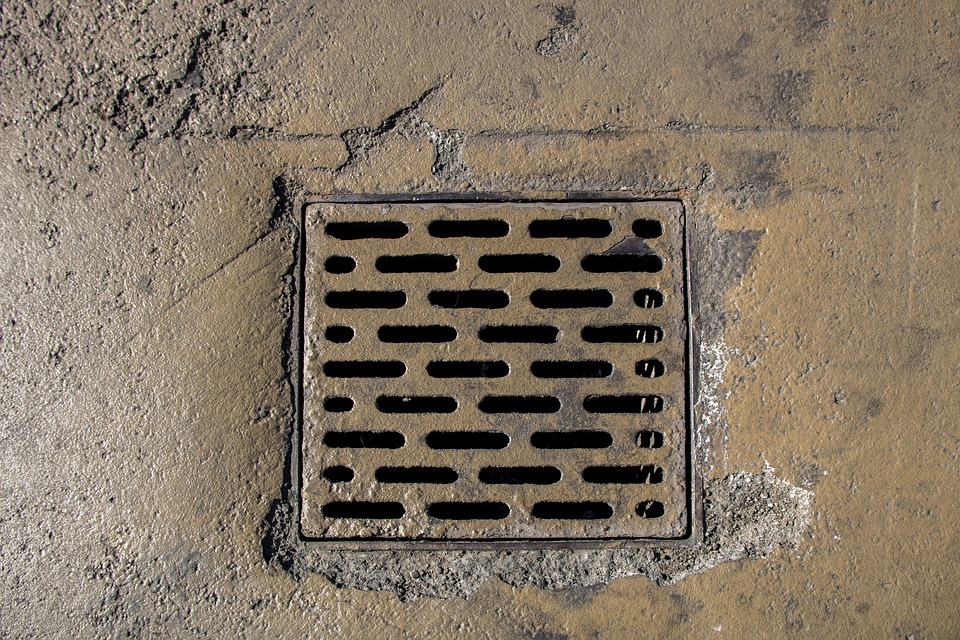
Listeria monocytogenes bacteria can thrive in cool, wet places, such as floor drains.
Return to all Produce Program News.
By Ollie Cultrara, Vermont Agency of Agriculture, Food & Markets
What does the phrase “produce safety” make you think of? You may have heard about foodborne illness outbreaks, such as the recent outbreaks of E. coli linked to baby spinach or Salmonella linked to onions. Because many fruits and vegetables are often eaten raw, we can’t rely on cooking to kill any harmful bacteria, viruses, or parasites that may be hitching a ride on our produce. Here in the Agency’s Produce Program, when we say “produce safety,” we mean taking steps to keep fresh fruits and vegetables from becoming contaminated with pathogens that can get people sick.
Understanding the pathogens we’re most concerned about—where they come from, what they need to thrive, and how they spread—is critical to preventing contamination. Let’s look at one species of bacteria that can cause particularly severe foodborne illness: Listeria monocytogenes.
What’s at stake
Listeria monocytogenes bacteria can cause a serious infection called listeriosis, especially in newborns, older adults, and people who are pregnant or have weakened immune systems. The U.S. averages about 1,600 diagnosed cases of listeriosis annually. While Listeria infection is less common than E. coli or Salmonella infections, listeriosis is one of the leading causes of death from foodborne illness. Symptoms of severe infection can include headache, stiff neck, confusion, loss of balance, and convulsions. Most people with severe listeriosis require hospitalization, and about one in five people with invasive listeriosis die. When the infection occurs during pregnancy, it can cause miscarriage, stillbirth, or newborn death.
Where Listeria thrives
Bacteria need nutrients, moisture, and the right temperatures to grow and divide. Listeria species (including L. monocytogenes) are widely present in the environment, including reservoirs such as ruminant animals, soil, decaying animals and plant material, and other moist environments. Listeria species are hardy and can continue to grow and divide at a wide range of temperatures, including below 33 degrees Fahrenheit, unlike many other microorganisms which multiply more slowly in cold temperatures. This means that Listeria can out-compete other organisms that do not thrive in refrigeration conditions.
Because of these characteristics, we are most concerned about preventing L. monocytogenes from becoming established in facilities, cold storage, HVAC equipment, floor drains, or equipment that may be difficult to clean. In areas and equipment used for handling produce, spaces where water and organic debris collect are important to clean regularly to avoid allowing microorganisms to build up and establish biofilms in these "harborage points.” Biofilms are communities of bacteria attached to surfaces which are protected by a matrix of glue-like molecules secreted by the bacteria. Once established, biofilms make bacteria very difficult to remove completely.
Reducing risks
Farms are biodiverse environments where both beneficial and potentially harmful microorganisms are present, but microbial risks can be managed. Good agricultural practices that reduce the risk of produce becoming contaminated with L. monocytogenes include:
- Routinely cleaning, and when appropriate, sanitizing, all food contact surfaces.
- Protecting produce from condensate and drips, such as from cooler ceilings, overhead pipes, and cooling units.
- Periodic deep cleaning of non-food contact surfaces, like floors, walls, and drains, scrubbing with a detergent to break up biofilms and prevent buildup of organic matter and microorganisms.
- Allowing surfaces to dry between uses whenever possible.
- Avoiding use of high-pressure water while cleaning to prevent backsplash or aerosolization, which can transfer bacteria from dirty surfaces to clean surfaces. Never use high pressure water to clean floor drains for this reason.
Next steps
The Food Safety Modernization Act (FSMA) Produce Safety Rule (PSR) is a federal regulation that aims to prevent foodborne illnesses related to fresh fruits and vegetables. The PSR sets a science-based, national standard for safely growing, harvesting, packing and holding produce on farms. The Rule focuses on microbial contamination risks – conditions that could spread harmful pathogens to produce.
Whether or not your farm is subject to inspection under the PSR, the Vermont Agency of Agriculture’s Produce Program can help you implement practices to protect food safety on your farm. Contact the Vermont Produce Program at AGR.FSMA@vermont.gov, (802) 461-5128. For more information, visit our Produce Safety Resources page.
References
Centers for Disease Control and Prevention. (2016, December 12). Listeria (Listeriosis) Questions and Answers. Retrieved January 31, 2022, from https://www.cdc.gov/listeria/faq.html.
Food and Drug Administration. (2012). Bad Bug Book (second edition). Retrieved January 31, 2022, from https://www.fda.gov/food/foodborne-pathogens/bad-bug-book-second-editio…;
Food and Drug Administration. (2019, March 28). Listeria (Listeriosis). Retrieved January 31, 2022, from https://www.fda.gov/food/foodborne-pathogens/listeria-listeriosis.
Maine Department of Agriculture, Conservation & Forestry. (n.d.). Listeria monocytogenes. Retrieved January 31, 2022, from https://www.maine.gov/dacf/qar/fsma/docs/resourcelibrary/listeria-monoc…;
Produce Safety Alliance. (2019). Produce Safety Alliance Grower Training Course (Version 1.2)

